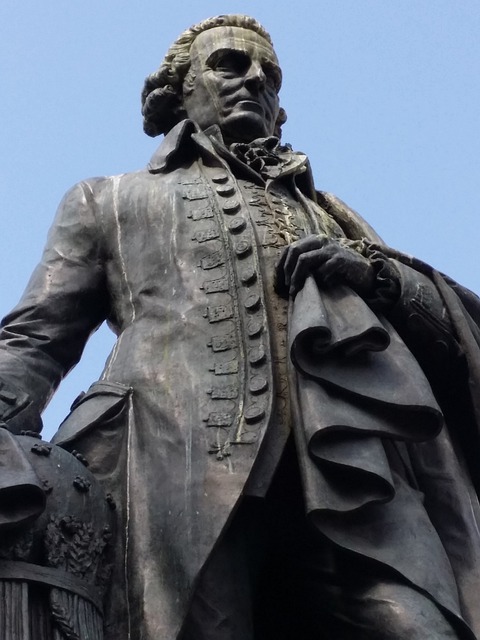By Tim Lambert
His Early Life
Adam Smith was a great philosopher and economist of the 18th century. He was one of the leading figures of the Scottish Enlightenment. Adam Smith is sometimes called the father of economics. Adam Smith was born in 1723 at Kirkcaldy in Scotland. (His exact date of birth is not known but he was christened on 5 June). His father was also called Adam Smith and he worked as a secretary but he died 5 months before his son was born. Adam Smith Junior was brought up by his mother Margaret Smith. Adam Smith attended the local school then when he was 14 he went to Glasgow College. Adam was particularly interested in mathematics.
In 1740 he went to Oxford and he spent 6 years there. In 1746 Adam Smith returned to Kirkcaldy. Then in 1748, Adam Smith began giving lectures at Edinburgh University. Finally, in 1751 he moved to Glasgow where he became a professor of logic. In 1752 Smith also became a professor of philosophy.
In 1759 Adam Smith published the first of his two great books, The Theory of Moral Sentiments. However, in 1764 smith resigned from the university to become travelling tutor to the son of Charles Townsend while he was touring Europe. The tour lasted 3 years. The tour lasted 3 years and Smith returned to Scotland in 1766. In 1773 Smith was made a member of the Royal Society of London.
The Wealth of Nations
In 1776 Adam Smith produced his second great work An Inquiry into the Nature and Causes of the Wealth of Nations. In it, Smith argued strongly for free trade between nations. Smith argued that competition in a market economy benefits the whole of society as each individual seeks his own good. Adam Smith said that the market may appear chaotic but it is guided by an invisible hand. Smith also argued that the division of labor will increase production.
In 1778 Adam Smith was given a post as a commissioner of customs in Edinburgh. He moved into a house called Panmure House. Then in 1783, Smith became a founding member of the Royal Society of Edinburgh. Adam Smith died on 17 July 1790. He was buried in Canongate Churchyard on 22 July 1790.

Smith never married and left no children. Yet the ideas of Adam Smith have stood the test of time. In 2007 the Bank of England put a picture of Adam Smith on the back of a 20-pound note.